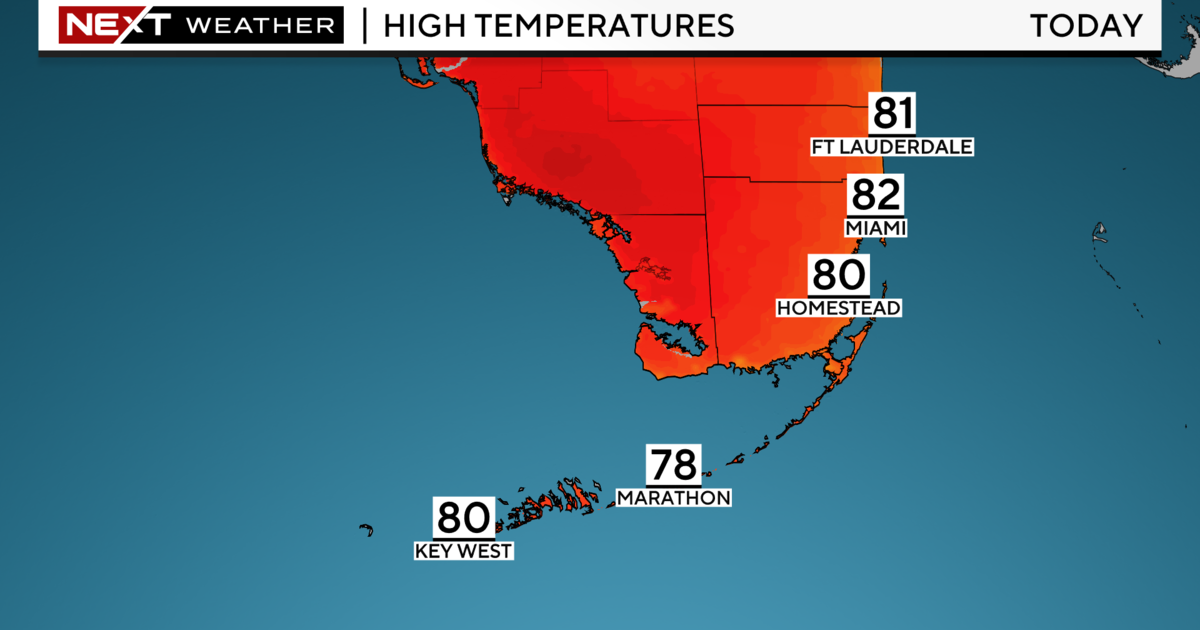What To Do To Stay Safe Around Water This Summer At The Pool Or Beach
MIAMI (CBSMiami/CNN) - With summer in full swing and excessive heat waves rolling through parts of the country, taking a dip in water can be a refreshing way to cool off.
Whether you're diving into your family's backyard pool or floating in the ocean, staying safe around water is crucial, said Dr. Sarah Denny, lead author for the Prevention of Drowning American Academy of Pediatrics policy statement.
Already this summer, people have died while boating at a lake in Ohio and swimming in the ocean off the Florida shore.
While people of all ages are at risk of drowning, children are especially vulnerable, said Denny, a pediatrician at Nationwide Children's Hospital in Columbus, Ohio, and associate clinical professor of pediatrics at The Ohio State University College of Medicine. Drowning is the leading cause of death in children ages 1 to 4 in the United States, she added.
Knowing how to stay safe around water and what to do in case of an emergency can prevent people from drowning, said Stephanie Shook, senior aquatics manager for the American Red Cross.
Here are some ways to practice water safety this summer while still having fun in the sun (and water).
Swimming pools
One of the most important safety actions you can take is to prevent unsupervised access to any pools, Shook said.
Adults should surround pools and spas with barriers on all sides to prevent unsupervised access to water.
Most young children who died in home pools were not intended to be in the water during nonswim time, were last seen in the home, and had been out of sight for less than five minutes, Shook said.
There should be equipment stored close to the pool so that if someone begins drowning, it's at the ready for the person to grab on to for safety, she said. Adults should also stock up on life jackets and have a first aid kit available.
Lakes and rivers
A visit to a lake or river can be a great escape during the hot summer months, but it also comes with an advanced set of guidelines for staying safe.
It's important to plan ahead and check for weather and water conditions like currents and rapids before embarking on your trip, Shook said. Also plan on activities in areas designated for swimming that have lifeguards available.
Rivers can have wild and unpredictable currents. If you get caught in a river current, lie on your back with your feet in front of you so you can fend off rocks as you float downstream, Shook said.
Once it's safe, swim to the shore as soon as possible, she added.
Do not stand up while trapped in the current because "one or both of your feet could become entrapped and pinned, even in just a few feet of water," Shook said.
While on a boat, passengers should wear a US Coast Guard-approved life jacket in the event of an emergency, she added. That includes the most experienced swimmers.
Oceans
The ultimate summer getaway is a beach vacation, but a larger body of water brings additional water challenges.
Just as you would at lakes and rivers, only swim in designated swimming areas with a lifeguard on duty, Shook said. Also be sure to check the water depth and enter the water with your feet for the first time to prevent injuries from diving in shallow water, she noted.
You may find yourself caught in a rip current -- a strong, narrow area of fast-moving water that can be dangerous and even deadly, Shook said. If you find yourself caught in a rip current, swim parallel to the shore until you are out of the current and then swim back to shore.
Permanent rip currents can exist near piers and jetties, Shook said, so stay at least 100 feet (30.5 meters) away from them when swimming.
Chain of drowning survival guide
It only takes an inch of water to introduce risk for a drowning hazard, so it's important to know what to do if you spot someone in distress in the water, Shook said. If you spot someone in need of help, here is what the American Red Cross recommends, in this order:
Recognize the signs of someone in trouble and shout for help.
Rescue and remove the person from water without putting yourself in danger.
Call emergency medical services.
Begin rescue breathing and CPR, and use an AED (or automated external defibrillator) if available.
Transfer care to advanced life support, if needed.
Swimming skills
Children are especially vulnerable to drowning, but both adults and children should take swimming lessons to understand how to swim, Denny said.
"They do not need to have a beautifully, technically correct stroke, but they have to have the basic water skills to keep themselves safe around water," she said.
If your child knows how to swim in a pool, do not assume those skills apply to open waters like lakes and pools, Denny noted.
Swimming skills do not "drownproof" a child, she said, and children should still stay close to adults and be supervised in case of an emergency.
Aquatic facilities around the country have partnered with the American Red Cross to offer swimming and water safety courses for people of all ages. Check out this website for a list of classes or check with your local pool facilities.
It is also a smart idea to have at least one adult present trained in CPR/AED skills so he or she can help a drowning victim until professional help arrives. The American Red Cross has a list of online and in-person training classes.
Families can introduce water safety behaviors to their children at a young age with the American Red Cross' Water Safety for Kids activities and videos.
The organization also offers a free swim app so parents can track their children's swimming skills and teach them water safety. Parents can take a free online training course to learn how to minimize drowning risk.
(©2021 CBS Broadcasting Inc. All Rights Reserved. Cable News Network, Inc., a Time Warner Company, contributed to this report.)



